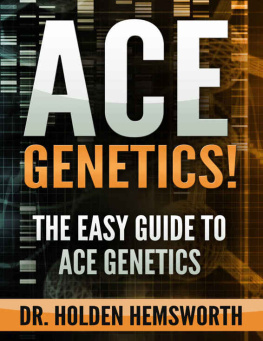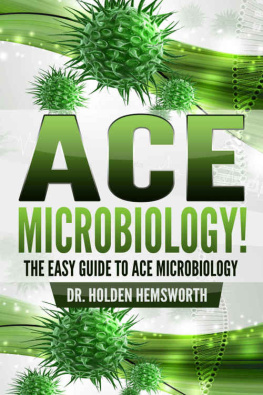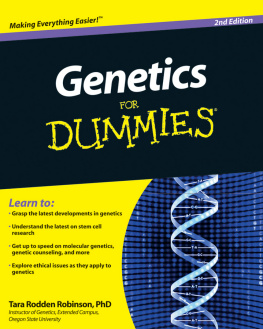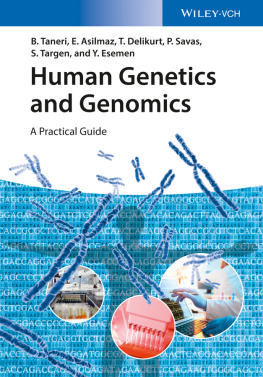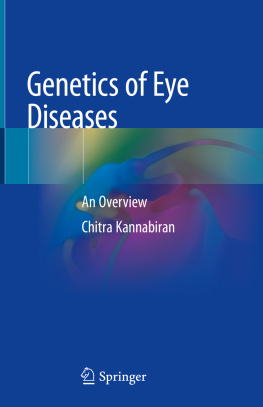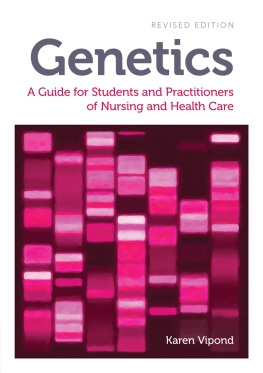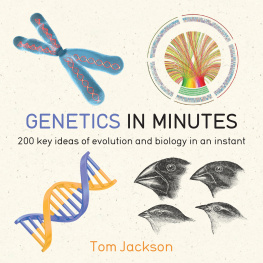Ace Genetics!
(The Easy Guide to Ace Genetics)
By: Dr. Holden Hemsworth
Copyright 2015 by Holden Hemsworth
All rights reserved. No part of this publication may be reproduced, distributed, or transmitted in any form or by any means, including photocopying, recording, or other electronic or mechanical methods, without the prior written permission of the publisher, except in the case of brief quotations embodied in critical reviews and certain other noncommercial uses permitted by copyright law.
Disclaimer
Genetics, like any field of science, is continuously changing and new information continues to be discovered. The author and publisher have reviewed all information in this book with resources believed to be reliable and accurate and have made every effort to provide information that is up to date and correct at the time of publication. Despite our best efforts we cannot guarantee that the information contained herein is complete or fully accurate due to the possibility of the discovery of contradictory information in the future and any human error on part of the author, publisher, and any other party involved in the production of this work. The author, publisher, and all other parties involved in this work disclaim all responsibility from any errors contained within this work and from any results that arise from the use of this information. Readers are encouraged to check all information in this book with institutional guidelines, other sources, and up to date information.
The information contained in this book is provided for general information purposes only and does not constitute medical, legal or other professional advice on any subject matter. The author or publisher of this book does not accept any responsibility for any loss which may arise from reliance on information contained within this book or on any associated websites or blogs.
Why I Created This Study Guide
In this book, I try to breakdown the content covered in most undergraduate Genetics courses in college for easy understanding and to point out the most important subject matter that students are likely to encounter. This book is meant to be a supplemental resource to lecture notes and textbooks to boost your learning and go hand in hand with your studying!
I am committed to providing my readers with books that contain concise and accurate information and I am committed to providing them tremendous value for their time and money.
Best regards,
Dr. Holden Hemsworth
Your reviews greatly help reach more students. If you find this book helpful, please click below to leave a review on Amazon or to share the book on Facebook. Nothing helps more than a few kind words.


Table of Contents
What is Genetics?
Genetics is the scientific study of heredity and heredity variation. Heredity is the passing of biologicals traits from one generation to the next that results from the transmission of genes from parents to offspring.
- DNA (deoxyribonucleic acid), hereditary material in almost all organisms
- Notable exception: hereditary material in retroviruses is RNA
- Chromosomes - long threadlike structure composed of chromatin
- Carry genetic information in the form of genes
- Contain hundreds or even thousands of genes at a locus
- Locus - specific location on a chromosome containing a gene
- Genes units of hereditary information made of DNA
- Most genes contain information to synthesize specific proteins
Fields of Genetics
Genetics is traditionally divided into three areas: transmission genetics, molecular genetics, and population genetics.
Transmission Genetics
- Examines how traits are transferred from parent to offspring
- Mendel provided the conceptual framework for this field
- He showed that genetic determinants pass from parent to offspring as discrete units
Molecular Genetics
- Examines genes
- Their features, organization, and function
- As well as mutant genes with abnormal function
- Study model organisms
- Model organisms are species that have been widely studied
- Usually, they have particular experimental advantages
- Easy to breed, breed quickly, easy to maintain, etc.
Population Genetics
- Examines the genetic composition of populations (i.e., the distribution and changes of allele frequency in a population)
- Allele frequency is subject to four main evolutionary processes
- Natural selection
- Gene flow (migration)
- Migration moves alleles between populations
- Mutation
- Genetic drift
- Changes in allele frequencies due to random sampling from the population
Brief History of Genetics
- 1866 Mendel published his ideas on inheritance, equal segregation, and independent assortment
- Significance of his work was not recognized for over 30 years
- 1869 DNA (initially called nuclein) is identified by Friedrich Miescher
- Significance of DNA was not realized for over 70 years
- 1900 Mendels work is rediscovered
- 1902 Disease is first related with genetic causes, chromosome theory of inheritance proposed by Sutton
- Theory identified chromosomes as carriers of genetic material
- 1944 DNA is identified as the hereditary material
- Skepticism remained for years to follow
- 1953 Watson and Crick figured out that DNA is in the shape of a double helix
- Determination of the structure of DNA led to rapid developments in molecular genetics
- 1970s Gene cloning and DNA sequencing methods developed
- 1980s DNA marker analysis methods, DNA fingerprinting methods, and PCR is developed
- 1990s Whole genome sequencing methods developed leading to Genomics, Proteomics, and Bioinformatics
- Genomics study of all genes in a genome
- Proteomics study of all proteins coded by a genome
- Bioinformatics science of collecting and analyzing complex biological data
- 2003 Human Genome Project is completed after being initiated in 1990
Charles Darwin and Natural Selection
Natural selection is the differential survival and reproduction of individuals that differ in phenotype. Adaptations are the result of the natural weeding out process of unfit individuals that is a part of natural selection (i.e. specific environmental pressures favor the reproductive success of some individuals over others).
Charles Darwin: 
- Charles Darwin stated in his book, On the Origin of Species, that a mechanism of evolutionary change was natural selection
- Darwin came up with the idea of natural selection based on the following observations:
- Individuals of a population vary in inheritable traits
- Populations can potentially produce more offspring than the environment can support
- Individuals best adapted to their environment reproduce more often

